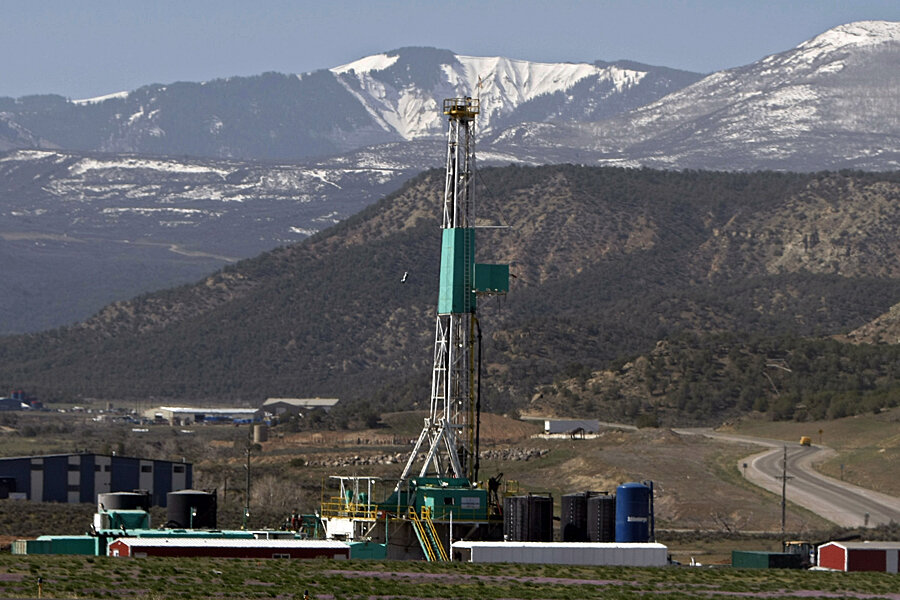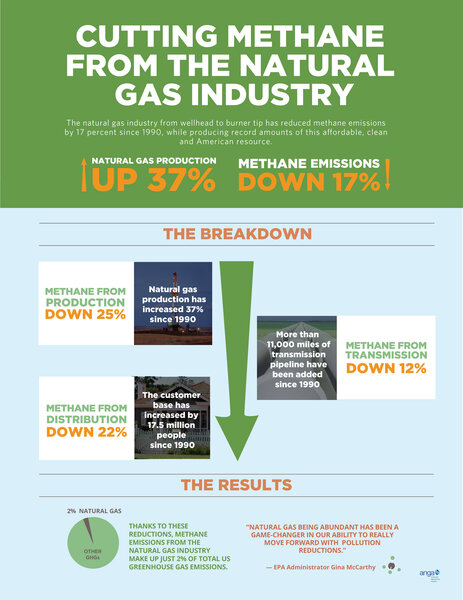Why emissions are falling from a source you might not expect
Loading...
As the Obama administration ponders steps to reduce greenhouse gas emissions across the economy, there is good news from what some may consider an unlikely source: The natural gas industry has cut methane emissions by 17 percent since 1990, even as the U.S. has rapidly emerged as the world’s largest producer of natural gas.
This news comes on top of the fact that expanding use of natural gas for power generation is the primary reason the U.S. has reduced carbon emissions more than any other country over the past eight years and driven sulfur dioxide and smog-forming NOx emissions down by more than two-thirds over the past two decades.
Technology is making it possible for industry to produce more natural gas and do it in a cleaner and more efficient way. In just one example of how innovation has led to lower emissions, a majority of natural gas wells in the United States now utilize green completion technologies, which maximize the capture of natural gas at the wellhead, so more of the product makes it to market. Researchers at the University of Texas have observed 99 percent reductions in methane emissions during the well completion process thanks to these technologies. And new EPA rules requiring green completions at all new wells starting in 2015 come on the heels of decades of industry progress.
Steady reductions in methane emissions throughout the natural gas system are particularly notable for occurring against the backdrop of dramatically expanding use of domestic natural gas, particularly for cleaner power generation and American industrial and manufacturing growth.
Since 1990, natural gas production is up 37 percent, while methane emissions related to this production are down 25 percent. Our nation also has added nearly 12,000 miles of long-haul transmission pipelines and 600,000 miles of new local distribution pipelines, while reducing methane leaks from them by 12 percent and 22 percent, respectively.
EPA Administrator Gina McCarthy acknowledged this industry-led progress at a recent Christian Science Monitor event, noting that the Administration is “looking clearly at both regulation and voluntary actions and commitments of the business community as opportunities for reductions.” More broadly, she has recognized the role of abundant American natural gas as “a game-changer in our ability to really move forward with pollution reductions.”
Methane from natural gas systems account for just two percent of all U.S. greenhouse gas emissions. That said, innovation will continue to offer opportunities for improvement. Further reductions are continuing apace as industry continually pursues new technologies and practices—whether it’s new ways to enhance real-time detection of leaks so we get more gas to market or greater use of natural gas in our own operations, which also reduces emissions.
At its core, the shale gas revolution is powered by constant innovation. This progress is the reason our nation now produces more natural gas from far fewer wells. It’s why the United States also leads the world in carbon and other emissions reductions. And, it’s why we can be optimistic about our nation’s future economic and environmental prospects, as we expand our use of this clean, affordable and domestic fuel.
– Marty Durbin is president and chief executive officer of America’s Natural Gas Alliance, an industry group based in Washington.









